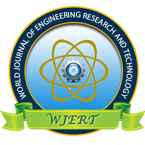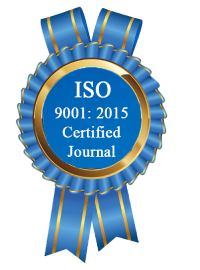| All | Since 2020 | |
| Citation | 172 | 110 |
| h-index | 7 | 5 |
| i10-index | 1 | 0 |
WJERT Citation 
Login
News & Updation
Abstract
DETECTION OF ANTIMICROBIAL COMPOUNDS BY BIOAUTOGRAPHY OF SELECTED SEAWEEDS AND PLANTS EXTRACTS
Amonika Aggarwal and Dr. Garima Saxena*
ABSTRACT
The emergence of new infectious diseases, considering the failure to acquire new molecules with antimicrobial properties from microorganisms have created the necessity for studies directed towards the development of new antimicrobials The world of plants constitutes an almost unlimited source of biologically active substances which are or could be used in the treatment of many human, animal and plant diseases[1,2] The screening methods are of great importance for the identification of antimicrobials from other natural sources. The richness of bioactive compounds in plant materials encourages continuous development of separation methods and bioassays for their isolation and identification. Thin-layer chromatography-direct bio autography links separation on the adsorbent layer with biological tests performed directly on it.[3] Therefore, the method is very convenient for searching plant and algae constituents with biological activity, such as antibiotics. Test bacteria grow directly on a plate surface excluding places where antibacterial are located. They can be detected with reagents converted by living bacteria. This paper discusses all above mentioned aspects of TLC-DB, illustrating them with literature, schemes and our own results. The objective of this study is to determine antibacterial activity of extracts by TLC-Bio autography. TLC-DB is also a very effective assay in searching for natural compounds with antifungal and antibacterial properties. The extracts from selected plants Ficus religiosa, Cynodon dactylon, Tinospora cordifolia and the sea weeds Kappaphycus alvarezii (Red Algae) and Sargassum species (Brown Algae) were screened for their antimicrobial activity. The test organisms included bacteria Bacillus subtilis, Shigella flexneri, Escherichia Coli, Enterobacter cloacae and fungi Saccharomyces cerevisiae, Aspergillus candidus, Aspergillus Niger and Pencillium Species which were obtained from Microbial Type Culture collection, Indian Institute of Microbial Technology Chandigarh, India. A simple bioautographic procedure, involving spraying suspensions of the bacteria or fungi on thin layer chromatography (TLC) plates developed in solvent was used to detect the number of antibacterial and antifungal compounds[4] present in the extracts which showed maximum zone of inhibition in antimicrobial assay by disc diffusion method. All the extracts had antimicrobial activity against at least one of the test microorganisms.This activity was denoted by white spots against a red-purple background on the TLC plates after spraying with tetrazolium violet.[5] Of the bacteria tested, Bacillus subtilis was inhibited by the most compounds separated on the TLC plates from all the tested plants and algae. Similarly, growth of the fungus Saccharomyces cerevisiae was also inhibited by many compounds present in the extracts. The extracts of Ficus religiosa, Cynodon dactylon, Tinospora cordifolia, Kappaphycus alvarezii, and Sargassum species showed inhibition bands depicting antimicrobial activity and result was in conformity with the antimicrobial results by disc diffusion method The compilation indicates that cow urine extracts of selected algae Sargassum species and Kappaphycus alvarezii and plants Ficus religiosa, Cynodon dactylon, Tinospora cordifolia, exhibit better antimicrobial action against different clinical microbial strain. The extract showed significant antibacterial activity and this good inhibition activity can be used in control of microbial diseases by identifying novel and advanced medicines from cow urine extracts of selected plant species and algae which are future reservoir of new novel pharmaceutical agents. It was concluded that cow urine itself has antimicrobial property and inhibitory activity of plant extracts can synergistically can be used as a precursors for the synthesis of useful herbal drugs. Thus this novel extracts can be useful in solving the growing crisis and can provide antibiotic resistance for search of new antimicrobial compounds from natural resources. These products essentially help to identify newer structurally novel natural products which can be used for the treatment of bacterial and fungal infections.
[Full Text Article] [Download Certificate]
